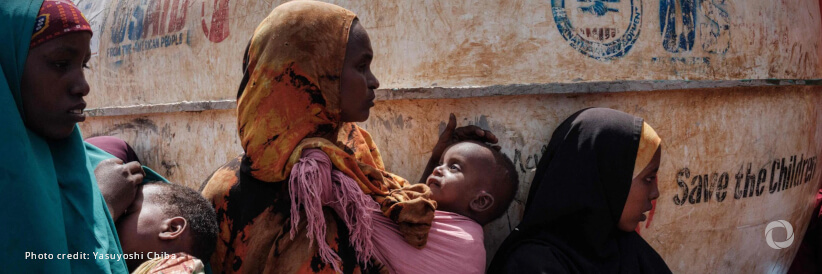Action Against Hunger is raising the alarm about rising hunger rates as a new Climate Hazards Center forecast predicts a sixth consecutive failed rainy season in the Horn of Africa. Below-normal rains between March and May could further stress limited food and water supplies as, across the Horn of Africa, an estimated 46 million people — more than the population of California — urgently need food assistance.
“This is the worst drought the Horn of Africa has seen in 40 years. In Somalia alone, 8.3 million people are facing food insecurity, and 1.8 million children are likely to be acutely malnourished by the spring. Many are on the brink of famine,” said Ahmed Khalif, Country Director for Action Against Hunger in Somalia. “In Action Against Hunger’s 30 years in Somalia, we’ve never seen more people streaming into our hunger treatment centers. We are grateful that donors are responding, but needs are growing even faster than contributions.”
The preliminary results of an Action Against Hunger survey compiled in January 2023 indicate a significant increase in the level of acute malnutrition in one of the regions hardest hit by the drought. The early results suggest that in Somalia’s Elbarde district, the overall rate of acute malnutrition has risen to 29.5%, up from 24% in 2021. The research also showed that in the week prior to the survey, 29.4% of children in the district were sick with either acute respiratory infection/cough (56.8%), diarrhea (56.8%), and malaria/fever (50.0%).
Already-high hunger levels are predicted to increase further as a result of the ongoing drought.
In response, Action Against Hunger’s ongoing efforts include:
- Access to clean water: Helping communities to better manage wells and communal water supplies and trucking in water as a short-term emergency measure that can help prevent further displacement.
- Sanitation and hygiene: Expanding access to safe sanitation and providing hygiene kits to promote health in areas where clean water is in short supply.
- Nutrition support: Improving food security through cash assistance that helps people access what little food is available locally.
- Mobile health services: Screening children for dangerous levels of malnutrition and providing home-based treatment or referrals to medical centers. Outreach teams have also been deployed to detect and care for children suffering from acute malnutrition and other illnesses, including cholera and measles, which are also on the rise.
- Advocacy: Working to mobilize funding from the global community and ensuring local groups on the front lines receive flexible funding in a timely way.
“The climate crisis is a hunger crisis, and a sixth failed rainy season would bring devastation beyond words,” said Dr. Charles Owubah, CEO of Action Against Hunger. “The key to preventing famine is a faster, more flexible response that directly supports nonprofits on the ground in the Horn of Africa. That approach has succeeded before and it can again – if the world acts in time.”

